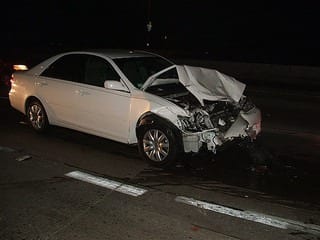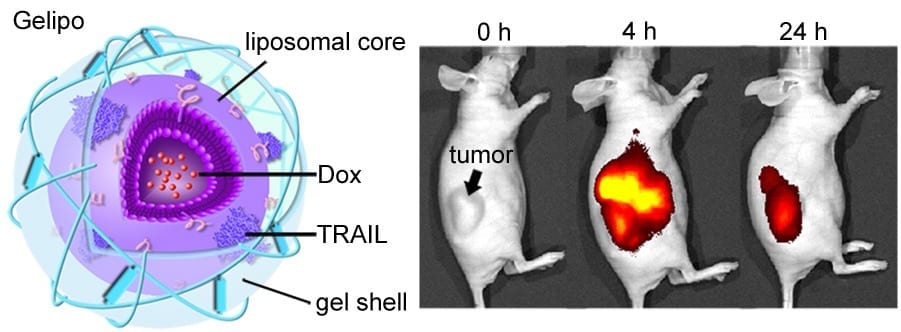
The researchers have successfully tested their algorithm on four common accident types
Scientists at Chalmers University in Göteborg, Sweden, are working with a team at car manufacturer Volvo to develop a vehicle control system that can take over steering and breaking when it detects an imminent collision. Details of the computer algorithm on which the team is working that can make split-second decisions on behalf of the driver and so reduce the risk of serious road accidents is described in the International Journal of Vehicle Safety.
Many vehicles now have parking sensors, some can even spot a suitable parking space and automatically steer into the space, many have traction control that reduces the chances of the driver losing control when conditions are slippery or on rough terrain. Several companies are even developing autonomous cars. Mattias Brännström and Erik Coelingh of Volvo’s Department of Safety Electronics and Functions are working with Chalmers’ signals and systems expert Jonas Sjöberg on new safety technology for cars that would not replace the driver but could make driving safer.
Autonomic control of a vehicle’s steering or braking systems based on the vehicle assessing the speed and direction of nearby vehicles could significantly reduce the number of often-fatal road accidents. Indeed, some cars already have active safety systems that work with either braking or steering to avoid collisions. However, Brännström and colleagues recognize that existing systems are often predefined to use either braking or steering to avoid accidents of a certain type, even though both types of actions may be applicable. This contribution considers an algorithm which can be used in general traffic situations not only to decide if an intervention is necessary to avoid an accident, but also to select the most suitable type of intervention, steering or braking.
They suggest that a vehicle using a computer algorithm to select intervention type when a risk arises based on the car’s sensor readings could make a much more appropriate decision to avoid an imminent collision. Braking or steering is then applied appropriately with very short response times.
The researchers have successfully tested their algorithm on four common accident types. First, rear-end accidents where the vehicle detects a lead vehicle and decides when automatic steering or braking should be applied to avoid a collision. Secondly, the single-target straight crossing path collisions where the decision depends on the speed of both vehicles as to whether braking or steering to avoid the collision would work best. Thirdly, collision scenarios with oncoming vehicles. Finally, situations where multiple obstacles need to be considered. The algorithm can also be adjusted for additional factors, that the vehicle be kept on the road regardless, which would be especially important when driving on bridges, mountainous terrain with precipices and cliffs or at the edge of a body of water.
The Latest on: Active safety systems
[google_news title=”” keyword=”Active safety systems” num_posts=”10″ blurb_length=”0″ show_thumb=”left”]
via Google News
The Latest on: Active safety systems
- Active Clubs: A new far-right threat to democratic electionson May 2, 2024 at 4:48 am
Across North America and Europe, the far-right Active Clubs movement is expanding at an unprecedented pace, presenting new threats to democratic elections and minorities. With a network of ...
- Delivery van safety features could mitigate 4 in 10 fatal crashes, study sayson May 2, 2024 at 4:34 am
Cox said that the findings represent the "ceiling" for improving safety in light vans. "If those four systems were equipped on every light ... forward collision warning with active braking and ...
- City discusses bicycle safety and active transportationon May 1, 2024 at 1:53 pm
Laredo Mayor Dr. Victor Trevino advocated for bicycle safety and active transportation as the city proclaimed National Bike Month Wednesday.
- Ford’s BlueCruise Hands-Free System Faces Scrutiny After Tragic Accidentson May 1, 2024 at 11:33 am
The U.S. National Highway Traffic Safety Administration (NHTSA) has launched an investigation into Ford’s hands-free driver-assistance system, BlueCruise, following its involvement in two fatal ...
- Legislators introduce bill to postpone saw safety ruleon May 1, 2024 at 11:12 am
In November 2023, the Consumer Product Safety Commission announced it was working on a proposed rule to require active injury mitigation (AIM ... touches a blade and stops it from spinning. The AIM ...
- Mount Horeb middle school reports no injuries except to suspect after reported active shooteron May 1, 2024 at 10:57 am
An emergency alert was sent to residents’ phones late Wednesday morning that warned people of an active shooter at the middle school. “They are armed with a rifle and should be considered dangerous,” ...
- The Power Of Effective Communication To Advance Workplace Safetyon May 1, 2024 at 4:00 am
Here are five innovative communication approaches to boost performance and help your team get serious about safety.
- Ford’s ‘BlueCruise’ Hands-Free Driving System Under Investigation After Fatal Crasheson April 29, 2024 at 7:39 am
An initial investigation confirmed the driver assistance was engaged prior to the collisions, a U.S. agency said.
- Ford's BlueCruise hands-free system under investigation after fatal crasheson April 29, 2024 at 4:40 am
Federal safety regulators have opened an investigation into Ford's hands-free driver assistance system, BlueCruise, after it was active during two recent crashes into stationary vehicles that killed ...
- Active hurricane season ahead: Lee public safety director talks about being preparedon April 26, 2024 at 2:13 am
Experts are calling for 23 named storms, with 11 of those becoming hurricanes (and five of those becoming a Category 3 or higher storm.) ...
via Bing News









